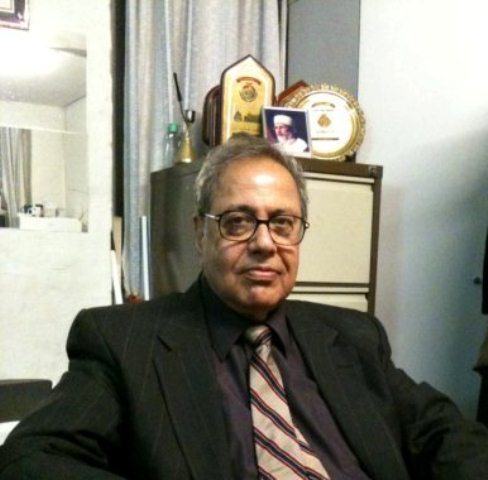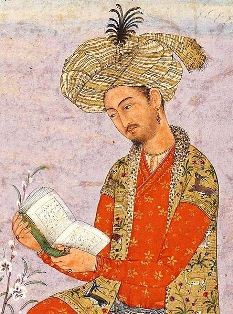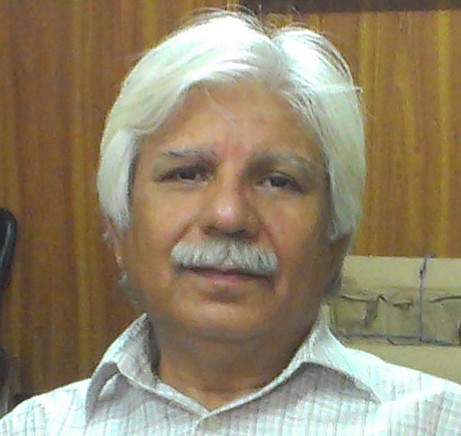
Babar’s Autobiography– وقائع نامہ
Reviewing a new translation by Hasan Beg
by Dr Satyapal Anand
Of a dozen or so books that I bought in Delhi, where I landed on my way back from Turkey, for attending the Rekhta festival, was a unique book, a new translation of Babar Namah بابرنامہ published a few years back. The translator Hasan Beg, a well known Karachi personality, left Pakistan in 1995 for reasons not far to see. He intended to settle down in Scotland – away from the hubbub of England. He probably wouldn’t remember that I met him way back in 2001 in Heathrow’s waiting lounge and we talked about Urdu literature.
My very careful reading of the book وقائع نامہ has not satisfied my natural tendency to know all about the person who writes his or her autobiography. I am myself guilty of having written a literary compendium that might be called an autobiography known Katha Char Janmon ki. I know the qualms of conscience one feels while writing about himself. Babar, the conqueror, was no exception to this rule.
Hasan Beg took help from a well known Farsi teacher, Yunus Jafri of Delhi, but when it comes to the minutest detail of hundreds of references to places and people in Babr Namah, Hasan Beg himself traveled the length and breadth of the subcontinent as also Afghanistan to see for himself the terrain and people of the landmass that Babar traveled in. He took photographs and included them in the book under review. There are eight maps or charts that lend credence to his written account. There is a complete bibliography and a list of Works Cited that shows the sweat-pouring labor that the translator-editor must have gone through.
My unanswered questions
Now I come to my unanswered questions. The foremost among these is one that others writing about the Moghul Empire never asked. I have asked these questions not only from experts in the history of the Moghul period, including Principal Sri Ram Sharma who had charted the year-to-year happenings from the first day of the rule of Babar to the last day of the rule of Aurangzeb, but also from other teachers of history.Why did the Moghul kings, like the Hindu predecessors who rules vast chunks of the subcontinent from Himalayas to the the seashore not understand that their empire was much more endangered from sea invasions by Europeans than by invaders from the North? Why did they leave the defense of the seashore to poor rajahs who no had no sea worthy craft, one just can’t understand. Shivaji Maratha was the first one to realize this truth and his carpenters built prototypes of Portuguese and Spanish wooden sea vessels. The answer from Principal Sri Ram Sharma was more as realistic as it was jocular. When I last met him in Chandigarh, he was in his early sixties still working as the Principal of the D.A.V. College there. He said that when the Portuguese representative brought a letter of credence to Jahangir’s court, the gifts from Lisbon included 50 bottles of the finest wine from Portugal. His request was for permission to build a shallow port and a trading post in Goa. Jahangir, who was given to drinking the local brew was astonished at the quality of this wine and the next morning he gave to the Portuguese representative the Royal declaration of accepting his credentials as an ambassador.
Moghuls as land lubbers
I remember Amitabh Ghosh’s very well researched work on the Moghul period also raising this question. He says that if one looked at the historical scenario in the longer context, one would know that the seeds of the demise of the Moghul empire were sown the day it was born. Babar was a land-lubber He had never seen sea at all. The fact is that when Babar was having his coronation at Delhi, the Portuguese and the Spaniards had already established their mud-and-brick forts and were trading with the local populace. Didn’t he know it? There is no mention of it anywhere in his autobiographical account, nor is there any reference to Spaniards or French, in addition to the Portuguese or the British, scouring the sea lanes to India and charging fee from Arab dhows for letting them sail safely to and fro India carrying valuable merchandise.
Babar Namah – the real text?
Born in 1483 A.D. at Farghana, Babar fought his Uzbek foes, was defeated a number of times and then on the run from the battlefield, established his first kingdom in Kabul. Even at the age of 12, he eyed Hindustan as a ripe fruit about to fall in his lap. He invaded India five times. Finally he did conquer Delhi, thus establishing the Moghul dynasty. One wonders how could a man who fought countless battles and one who died at the comparatively young age of 50, find time to write his daily diary (or whatever it is as Babar Namah?
Babr wrote in the Eastern Turkish dialect that he knew well and it was Abdurrahim Khankhanan who translated it into Farsi (then known as Persian in the rest of the world) under the title Waqiat-I-Babri. The Urdu edition now published is indeed a lot more reliable than the two earlier translations, one by Mirza Naseeruddin and the other by Rashid Akhtar Nadvi which were serialized under the title Tozak-I-Babri -. Suffice it to say that both are good, but they differ from each other, if not in recorded facts than in proper names and verbiage.
The Babri Mosque?
Shall I own up a thought that has occurred to me ? Babar has not forgotten even the slightest details of his battles, his forest hunting forages, (occasionally giving vent to his thoughts like Babar ba aish kosh ki aalam dobarah neest (O Babar, indulge in merry-making because the lifespan given to you will not not be repeated) . He committed to recording his meetings with men of state and culture or with ulemas of religious orders. He wrote details of his visits to places of interest and their history, or ordering grants for construction of forts, bridges over ravines and rivulets, and building of mosques in memory of friends fallen in battles. I read this translation of his autobiography twice to see if there was a mention of the construction of what has come to be known as the Babri mosque that has become a bone of contention between Hindus and Muslims in Ayodhia. I couldn’t find any reference at all. So what is the fact? May be, he got it built and forgot to mention it in his autobiography. One can only guess.





1 Trackback / Pingback
Comments are closed.